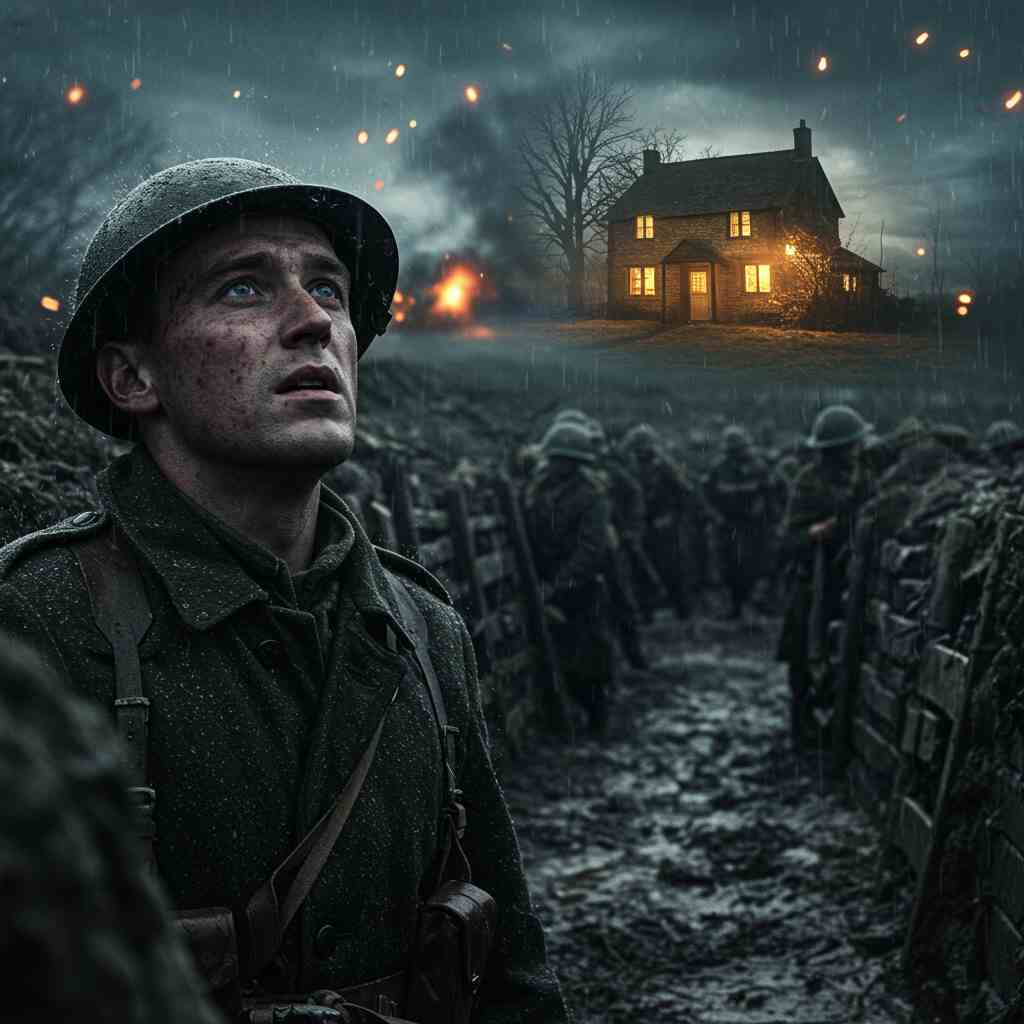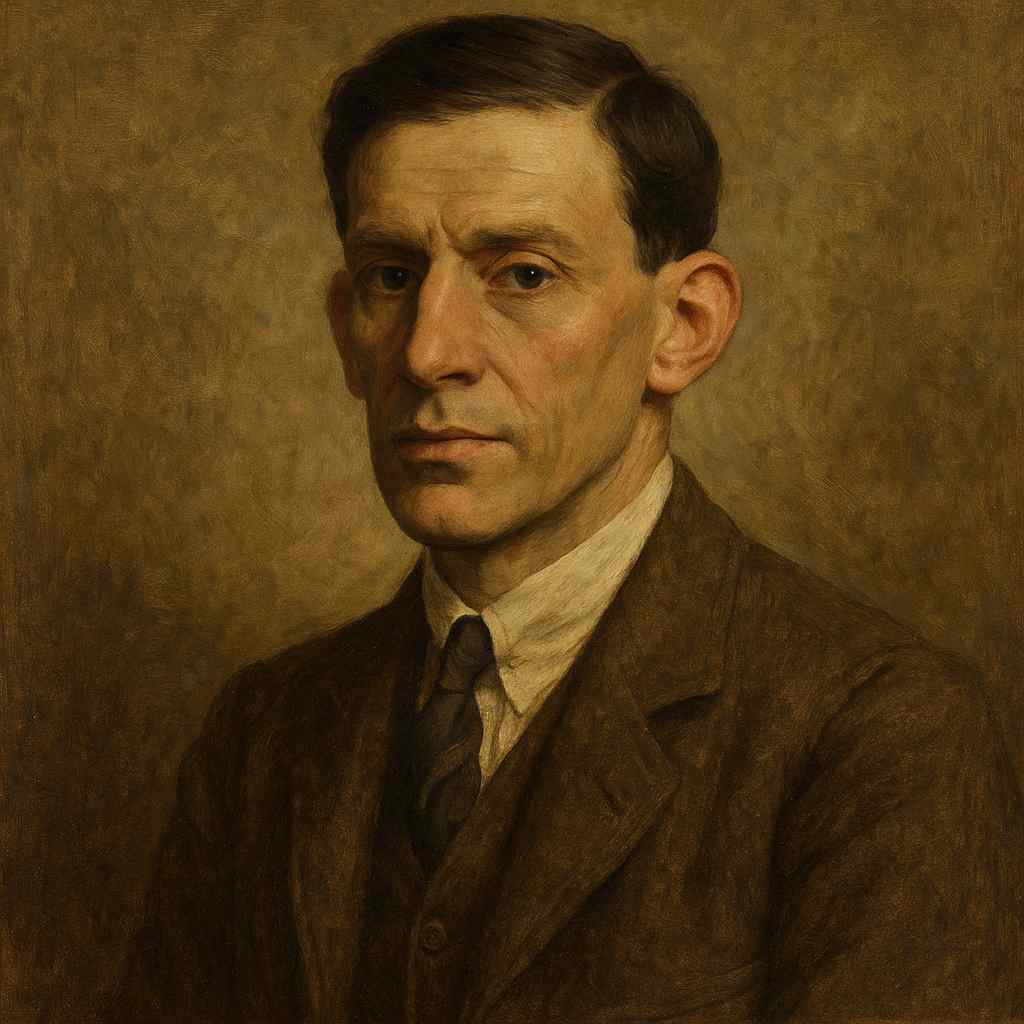Dreamers
Siegfried Sassoon
1886 to 1967

Soldiers are citizens of death's gray land,
Drawing no dividend from time's to-morrows;
In the great hour of destiny they stand,
Each with his feuds, and jealousies, and sorrows.
Soldiers are sworn to action; they must win
Some flaming, fatal climax with their lives.
Soldiers are dreamers; when the guns begin
They think of firelit homes, clean beds, and wives.
I see them in foul dug-outs, gnawed by rats,
And in the ruined trenches, lashed with rain,
Dreaming of things they did with balls and bats,
And mocked by hopeless longing to regain
Bank-holidays, and picture shows, and spats,
And going to the office in the train.
Siegfried Sassoon's Dreamers
Siegfried Sassoon’s Dreamers is a poignant and deeply evocative poem that captures the duality of soldiers’ lives during World War I. Written by one of the war’s most celebrated and critical voices, the poem juxtaposes the grim reality of trench warfare with the soldiers’ yearning for the mundane comforts of civilian life. Through its vivid imagery, stark contrasts, and emotional depth, Dreamers not only reflects the personal experiences of soldiers but also serves as a broader commentary on the human cost of war. This analysis will explore the poem’s historical context, its use of literary devices, its central themes, and its enduring emotional resonance.
Historical Context: The Great War and Sassoon’s Voice
To fully appreciate Dreamers, it is essential to situate it within the historical context of World War I and Sassoon’s own experiences as a soldier. The Great War, as it was known, was a conflict of unprecedented scale and brutality. The introduction of industrialized warfare—machine guns, poison gas, and artillery—transformed battlefields into landscapes of horror and despair. Soldiers lived in squalid conditions, often trapped in waterlogged trenches, surrounded by death and decay. Sassoon, who served on the Western Front, witnessed these horrors firsthand. His poetry, including Dreamers, emerged from this crucible of suffering.
Sassoon was not merely a passive observer; he was an outspoken critic of the war. His earlier works, such as The General and Suicide in the Trenches, are marked by a biting satirical tone and a deep sense of disillusionment. By contrast, Dreamers adopts a more reflective and melancholic voice, focusing on the inner lives of soldiers rather than the external absurdities of war. This shift in tone reflects Sassoon’s evolving perspective on the conflict, as well as his growing empathy for the ordinary men caught in its grip.
Literary Devices: Crafting Contrast and Emotion
Sassoon’s use of literary devices in Dreamers is masterful, serving to heighten the poem’s emotional impact and underscore its central themes. One of the most striking features of the poem is its use of contrast. The opening lines immediately establish a dichotomy between the soldiers’ present reality and their dreams of home:
“Soldiers are citizens of death’s gray land,
Drawing no dividend from time’s to-morrows.”
Here, the metaphor of soldiers as “citizens of death’s gray land” conveys the bleakness and finality of their existence. The phrase “drawing no dividend from time’s to-morrows” suggests that they are cut off from the future, living in a perpetual present defined by suffering and uncertainty. This stands in stark contrast to the domestic imagery that follows—firelit homes, clean beds, and wives—which represents the life they have left behind and to which they long to return.
The poem’s imagery is equally powerful. Sassoon paints a vivid picture of the soldiers’ environment, describing “foul dug-outs, gnawed by rats” and “ruined trenches, lashed with rain.” These images evoke the physical and psychological degradation of trench warfare, emphasizing the dehumanizing conditions in which the soldiers live. At the same time, the soldiers’ dreams of “balls and bats,” “bank-holidays,” and “going to the office in the train” highlight the stark disparity between their wartime reality and their pre-war lives. This juxtaposition serves to underscore the profound sense of loss and dislocation experienced by the soldiers.
Another notable device is Sassoon’s use of irony. The title itself, Dreamers, is deeply ironic. In a conventional sense, dreamers are associated with hope, imagination, and aspiration. Yet in the context of the poem, the soldiers’ dreams are not of grand ambitions or heroic deeds but of simple, everyday pleasures. This irony underscores the tragedy of their situation: their dreams are not a source of inspiration but a painful reminder of what they have lost.
Themes: The Human Cost of War
At its core, Dreamers is a meditation on the human cost of war. One of the poem’s central themes is the loss of innocence. The soldiers, who once led ordinary lives, are thrust into a world of violence and death. Their dreams of home and civilian life serve as a poignant reminder of the innocence they have lost. This theme is particularly evident in the lines:
“Dreaming of things they did with balls and bats,
And mocked by hopeless longing to regain
Bank-holidays, and picture shows, and spats.”
Here, the soldiers’ memories of playing sports and enjoying leisure activities highlight the stark contrast between their past and present selves. The use of the word “mocked” suggests that these memories are not a source of comfort but of pain, as they emphasize the impossibility of returning to their former lives.
Another key theme is the dehumanization of soldiers. Sassoon portrays the soldiers as passive victims of a larger, impersonal force. They are “citizens of death’s gray land,” stripped of agency and individuality. This dehumanization is further emphasized by the poem’s imagery, which reduces the soldiers to mere bodies in a desolate landscape. Yet, paradoxically, it is their dreams that humanize them, revealing their inner lives and emotional depth.
The poem also explores the tension between duty and desire. The soldiers are “sworn to action; they must win / Some flaming, fatal climax with their lives.” This sense of duty is juxtaposed with their desire to return to the comforts of home. This tension reflects the broader conflict between the ideals of patriotism and the harsh realities of war, a theme that resonates throughout Sassoon’s work.
Emotional Impact: Connecting with the Reader
One of the most remarkable aspects of Dreamers is its ability to connect with readers on an emotional level. Sassoon’s portrayal of the soldiers’ inner lives invites empathy and compassion, making their suffering feel immediate and real. The poem’s imagery and contrasts evoke a visceral response, drawing the reader into the soldiers’ world and forcing them to confront the human cost of war.
The poem’s emotional impact is further heightened by its universality. While Dreamers is rooted in the specific context of World War I, its themes of loss, longing, and the struggle to maintain one’s humanity in the face of adversity are timeless. This universality allows the poem to resonate with readers across different times and cultures, making it a powerful testament to the enduring human spirit.
Conclusion: A Timeless Reflection on War and Humanity
In Dreamers, Siegfried Sassoon has created a work that is both deeply personal and universally resonant. Through its vivid imagery, stark contrasts, and emotional depth, the poem captures the duality of soldiers’ lives—their outward stoicism and inner vulnerability. It is a poignant reminder of the human cost of war, as well as a testament to the resilience of the human spirit.
Sassoon’s ability to convey complex emotions with such clarity and precision is a testament to his skill as a poet. Dreamers is not merely a war poem; it is a meditation on what it means to be human in the face of unimaginable suffering. As such, it continues to resonate with readers today, offering a powerful and enduring commentary on the nature of war and the human condition.
This text was generated by AI and is for reference only. Learn more
Want to join the discussion? Reopen or create a unique username to comment. No personal details required!



Comments
No comments yet. Be the first to comment!